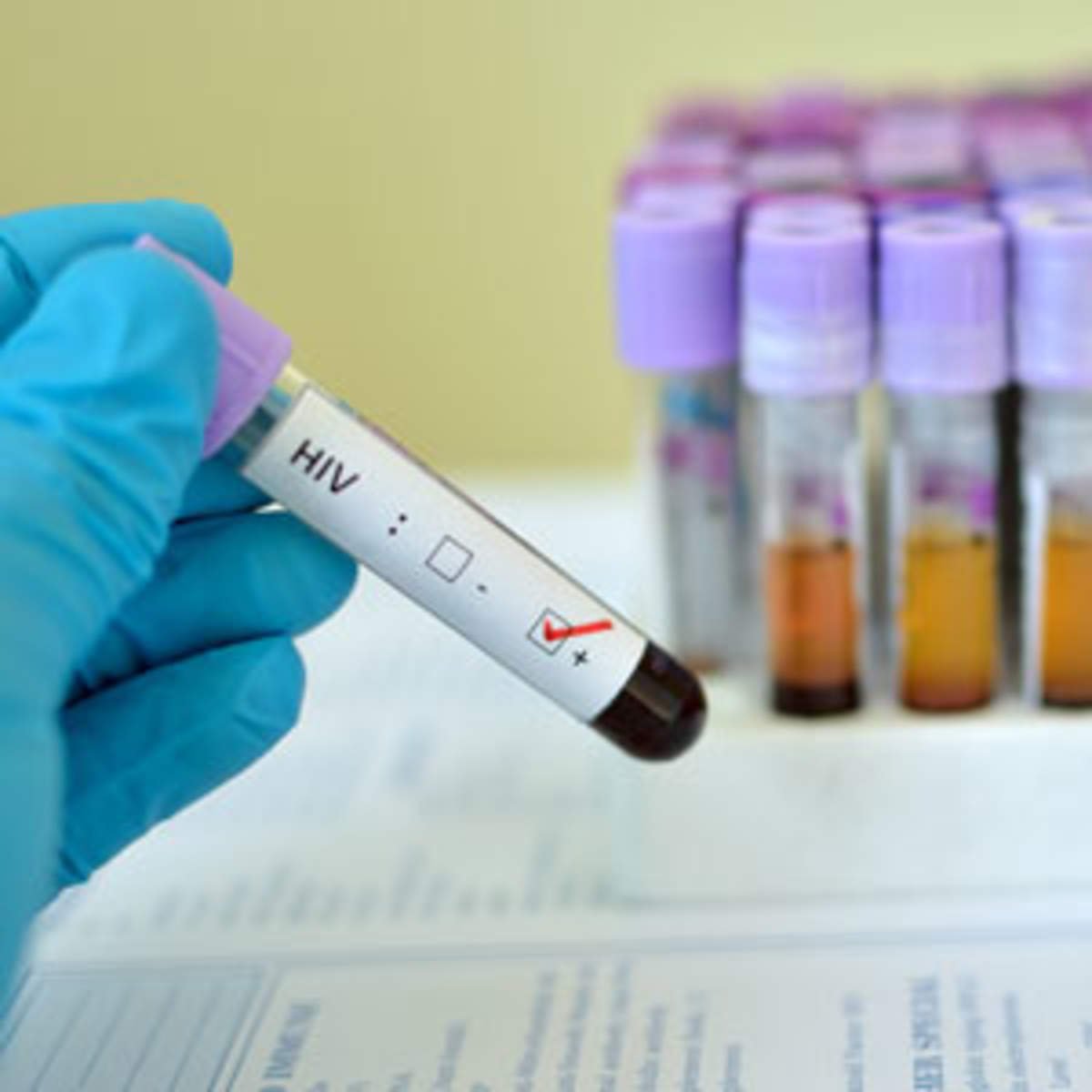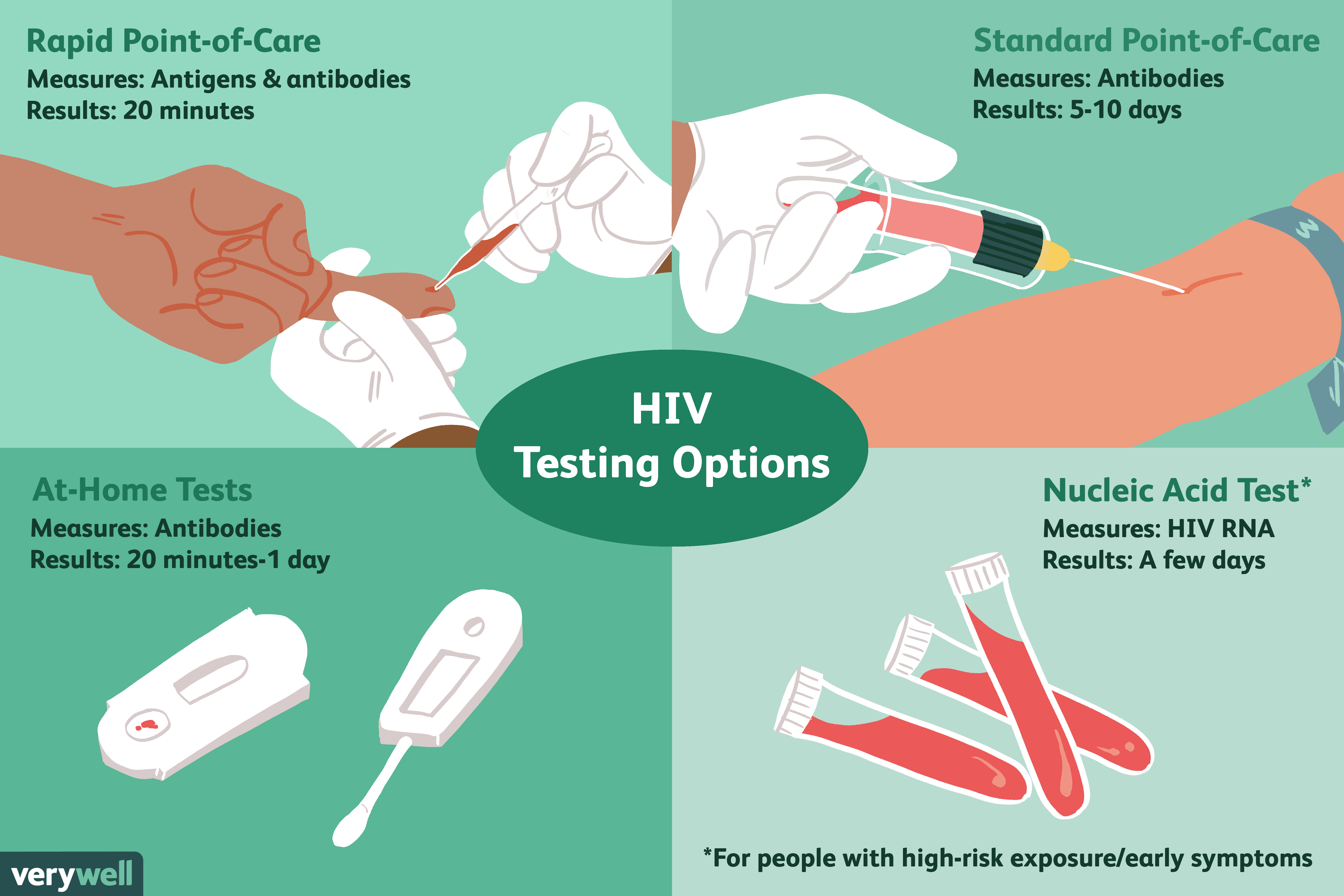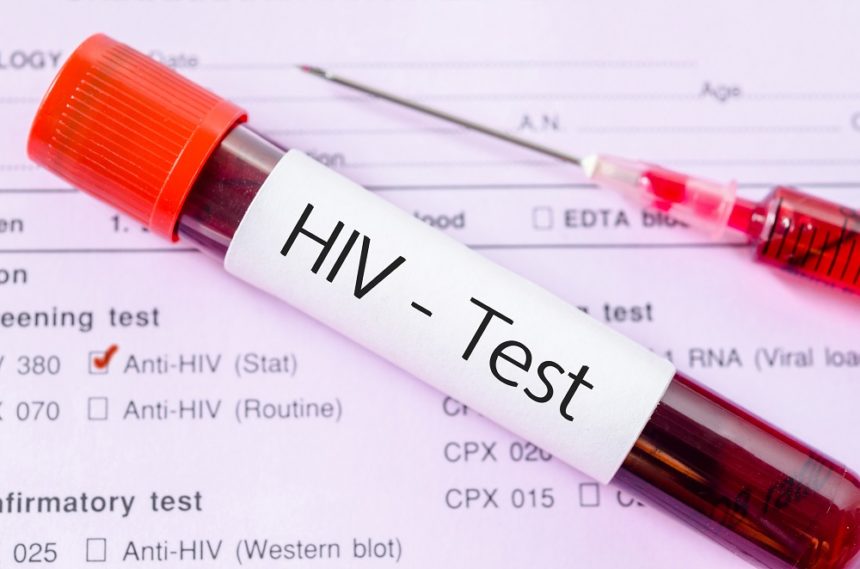Letting Partners Know You Have Hiv
If you have just been diagnosed with HIV, it will likely be a difficult time. You might still be struggling to come to terms with diagnosis.
During this time, it is important to let any sexual or injecting partners know they may have been exposed to HIV as soon as you can, so they can be tested and offered PEP if appropriate.
You do not have to do this alone. Your doctor or the Department of Health and Human Services Partner Notification Officers can help you through this process and ensure your identity is not revealed.. Both groups can provide information, support, and guidance for people living with HIV.
Reliability Of Virological Tests In The Presence Of Arv Exposure
There are theoretical concerns about the use of RNA or p24 Ag virological testing in infants who have been administered or are taking ARV prophylaxis for PMTCT or are breastfeeding where the mother is taking ART. Detection of viral RNA and p24 Ag depend on viral replication and ARVs inhibit this. Administration of more potent ARVs or combinations temporarily suppresses HIV RNA levels to low or undetectable levels . However, there are currently no data available to suggest that existing recommendations need to be revised. HIV RNA testing has been demonstrated to provide equal or improved sensitivity over DNA testing on plasma specimens . For infants on prophylaxis, some uncertainty remains related to reliability in extended infant prophylaxis.
What Is Drug Resistance Testing
Drug-resistance testing also has become a key tool in the management of HIV-infected individuals. Resistance testing is now routinely used in individuals experiencing poor responses to HIV therapy or treatment failure.
In general, a poor response to initial treatment would include individuals who fail to experience a decline in viral load of approximately hundredfold in the first weeks, have a viral load of greater than 500 copies per mL by week 12, or have levels greater than 50 copies per mL by week 24. Treatment failure would generally be defined as an increase in viral load after an initial decline in a person who is believed to be consistently taking his or her medications.
Because drug-resistant viruses can be transmitted, guidelines from the U.S. Department of Health and Human Services and International Antiviral Society-USA have suggested that resistance testing be performed in individuals who have never been on therapy to determine if they might have acquired HIV that is resistant to drugs.
The goals of antiviral therapy are to enhance immunity and delay or prevent clinical advancement to symptomatic disease without inducing important side effects or selecting for drug-resistant virus. Currently, the best marker of a drug’s activity is a decrease in the viral load.
Once the patient’s viral load is suppressed, they can often have viral load and CD4 cell counts performed less frequently .
Read Also: Nba Youngboy Truth About Herpes
Preparing And Storing A Dried Blood Spot For An Hiv Test
Blood from a finger- or ear-lobe stick can be used to make DBS. Although finger-stick is the most typical method, DBS can also be obtained by using blood collected in a tube with an anticoagulant. DBS have the advantage of being easy to transport, without the need for a cold chain.
Can Hiv Be Prevented

There is currently no vaccine to protect you against HIV, but avoiding high-risk activities such as having unprotected sex and sharing needles for injecting drugs can help to prevent its spread.
While there is no vaccine, the CDC and the World Health Organization recommend that individuals without HIV infection but at high risk for it consider taking pre-exposure prophylaxis , a daily pill to help prevent infection. For people taking PrEP consistently, the risk of HIV infection was significantly lower compared to those who didn’t take it.
If you have HIV, early diagnosis of your infection is important to prevent its transmission to others and to allow evaluation, monitoring, and treatment. Healthcare workers can protect themselves from HIV infection by following universal precautions, such as wearing gloves and avoiding needle sticks.
Post-exposure prophylaxis is another strategy for preventing HIV. PEP is taking antiretroviral medication after recent possible exposure to the virus. PEP should only be used in emergency situations and must be taken within 72 hours of possible HIV exposure. Talk to your healthcare practitioner or emergency department doctor about PEP right away if you:
- Think you have may been exposed through sex
- Think you were exposed through sharing needles or other works for injecting drugs
- Were sexually assaulted
- Are a healthcare worker and think you were exposed to HIV at work
You May Like: Jania Has Herpes
What Is An Hiv Test
An HIV test shows whether you are infected with HIV . HIV is a virus that attacks and destroys cells in the immune system. These cells protect your body against disease-causing germs, such as bacteria and viruses. If you lose too many immune cells, your body will have trouble fighting off infections and other diseases.
There are three main types of HIV tests:
- Antibody Test. This test looks for HIV antibodies in your blood or saliva. Your immune system makes antibodies when you are exposed to bacteria or viruses, like HIV. An HIV antibody test can determine if you have HIV from 312 weeks after infection. That’s because it can take a few weeks or longer for your immune system to make antibodies to HIV. You may be able to do an HIV antibody test in the privacy of your home. Ask your health care provider about at-home HIV test kits.
- HIV Antibody/Antigen Test. This test looks for HIV antibodies and antigens in the blood. An antigen is a part of a virus that triggers an immune response. If you’ve been exposed to HIV, antigens will show up in your blood before HIV antibodies are made. This test can usually find HIV within 26 weeks of infection. The HIV antibody/antigen test is one of the most common types of HIV tests.
- HIV Viral Load. This test measures the amount of the HIV virus in the blood. It can find HIV faster than antibody and antibody/antigen tests, but it is very expensive. It is mostly used for monitoring HIV infections.
What Does The Test Result Mean
- A negative HIV test usually indicates that you do not have an HIV infection. However, if you are screened too soon, the result may be negative despite the fact that you are infected . If an HIV test is negative but recent exposure is suspected, then an HIV RNA test or repeat testing with the HIV antigen/antibody blood test may be required.
Also, a negative screening test means only that there is no evidence of disease at the time of the test. If you are at increased risk of HIV infection, it is important to have screening tests performed on a yearly basis to check for possible exposure to the virus.
- If you test positive on both the initial screen and supplemental testing, then you are diagnosed with HIV.
The CDC recommends the following testing protocol to screen for and diagnose HIV infection:
- Screen for HIV infection using a combination HIV antigen/antibody test, then
- Verify a positive with a second HIV antibody test that differentiates between HIV-1 and HIV-2.
- If results of the first and second test do not agree, then the next test to perform is an HIV-1 RNA test . If the HIV-1 RNA is positive, then the test is considered positive.
Read Also: Hiv Causes Hair Loss
Whats The Name Of The Test For Hiv
HIV infection can be detected using ELISA Test, which stands for enzyme-linked immunosorbent assays. A Western blot test is usually administered to confirm a diagnosis when an ELISA test is positive. In the event that an ELISA test is negative, but you think you may have HIV, you should be tested again within one to three months.
What Diseases Do Not Show Up In Blood Tests
10 health conditions that cant be diagnosed by blood testsDEMENTIA: Its not your blood that gives the game away. PARKINSONS DISEASE: Again it is the symptoms the shaking, MULTIPLE SCLEROSIS : Youll probably end up having blood taken. RHEUMATOID ARTHRITIS: There is a blood test for rheumatoid factor, PROSTATE CANCER: Yes, there is a blood test available, the PSA,More items
Recommended Reading: Does Nba Youngboy Have A Std
What Happens If I Test Positive
If the result from an initial HIV test is positive, a healthcare professional will order follow-up testing to learn if the result is accurate.
If the first test was conducted at home, a healthcare professional will draw a sample of blood to test in a lab. If the first test was done in a lab, follow-up testing may be conducted on the same blood sample at the lab.
If the second test result is positive, a healthcare professional can help explain the treatment options for HIV. Early diagnosis and treatment can help improve the long-term outlook and reduce the chances of developing complications from HIV.
What Happens During An Hiv Test
You will either get a blood test in a lab, or do your own test at home.
For a blood test in a lab:
- A health care professional will take a blood sample from a vein in your arm, using a small needle. After the needle is inserted, a small amount of blood will be collected into a test tube or vial. You may feel a little sting when the needle goes in or out. This usually takes less than five minutes.
For at home test, you will need to get a sample of saliva from your mouth or a drop of blood from your fingertip.
- The test kit will provide instructions on how to get your sample, package it, and send it to a lab.
- For a saliva test, you will use special spatula-like tool to take a swab from your mouth.
- For a fingertip antibody blood test, you will use a special tool to prick your finger and collect a sample of blood.
For more information on at-home testing, talk to your health care provider.
Read Also: Does Nba Youngboy Have An Std
Where To Get An Hiv Test
Its never been easier to get an HIV test and to get a result quickly. You can get a test in person or order tests online, with free and paid-for options. Many tests will provide you with a result in a just a few minutes.
You can test in person at:
- An HIV testing centre, including those run by Terrence Higgins Trust.
- A GP/family doctor.
If you test at a sexual health clinic, testing centre or a GP then your test will be free. If you test at a private clinic, you will have to pay.
Face-to-face services may have different arrangements in place as a result of the coronavirus pandemic. Please call them before attending.
You can also order tests online including:
- A self test, which you take yourself and see the result within a few minutes.
- A postal test, where you take a sample yourself and send it off to a lab, who will then contact you with your result.
We sell HIV self testing kits for just £15 to those most at risk of HIV. This site also offers free tests in some areas: Bedford and Central Bedfordshire, Brighton and Hove, Essex and Thurrock, Milton Keynes, Norfolk, Suffolk and the Scottish Health Board areas of Fife, Tayside, Lanarkshire and Ayrshire & Arran. Anyone living in Scotland who isn’t eligible for a free test through our service will be able to access one through the new HIV Self Test Scotland scheme when it reopens.
Try our free online HIV test finder to see what online testing is available in your area.
If youre using a self test, look out for the CE mark.
Importance Of Hiv Testing

If you have the virus, finding out quickly means you can start treatment right away so you can feel better and live a long, full life. You can also take steps so you don’t pass HIV to other people.
Pregnant women should get tested because early treatment means you probably wonât pass it to your baby.
You May Like: Does Hiv Cause Hair Loss
Diagnosis Of Hiv Infection
Tests used for the diagnosis of HIV infection in a particular person require a high degree of both sensitivity and specificity. In the United States, this is achieved using an algorithm combining two tests for HIV antibodies. If antibodies are detected by an initial test based on the ELISA method, then a second test using the western blot procedure determines the size of the antigens in the test kit binding to the antibodies. The combination of these two methods is highly accurate
Why Do I Need An Hiv Test
The Centers for Disease Control and Prevention recommends that everyone between the ages of 13 and 64 get tested for HIV at least once as part of routine health care. You may also need an HIV test if you are at higher risk for infection. HIV is mainly spread through sexual contact and blood, so you may be at a higher risk for HIV if you:
- Are a man that has had sex with another man
- Have had sex with an HIV-infected partner
- Have had multiple sex partners
- Have injected drugs, such as heroin, or shared drug needles with someone else
HIV can spread from mother to child during birth and through breast milk, so if you are pregnant your doctor may order an HIV test. There are medicines you can take during pregnancy and delivery to greatly reduce your risk of spreading the disease to your baby.
Recommended Reading: How Long Can Hiv Be Dormant In Your System
Getting A Result Quickly
Many services offer rapid testing, which means a finger-prick test that will give you a result within minutes.
A self testing kit ordered online and done at home will normally give you a result up to 15 minutes, depending on the kit.
A blood sample taken at a testing centre will be sent to a lab, with results ready within a day or up to a week later.
If you use postal testing, the lab will normally contact you a week or so later with your result.
Where To Get Tested For Hiv
Getting an HIV test is easy. Tests for HIV and other STIs are confidential and available from your local doctor , or a sexual and reproductive health clinic.
It is a good idea to have some pre-test counselling. Before the test, talk with your doctor, nurse, or peer tester about any concerns, your level of risk, whether you are likely to be HIV-positive and what a positive result may mean.
Don’t Miss: How Long Until Hiv Turns Into Aids
Understanding Results Ofwestern Blot
| Reference Range | |
|---|---|
| :NOT SEEN | Negative |
*A Reference range is a set of values which helps the healthcare professional to interpret a medical test. It may vary with age, gender, and other factors. Reference ranges may also vary between labs, in value & units depending on instruments used and method of establishment of reference ranges
Cost And Health Insurance
Most insurance plans, including Medicare and Medicaid, will cover the cost in full as part of the Affordable Care Acts essential health benefits.
It is important to note that, while point-of-care tests are typically covered by insurance, at-home test kits may not be. Check with your insurance provider to better understand your benefits in this regard.
If you are uninsured, you can find low- to no-cost testing sites through the GetTested locator offered by the Centers for Disease Control and Prevention .
Don’t Miss: How Long Can Aids Go Undetected
How Do The Tests Work
Most HIV tests use a blood sample, either from a blood draw or finger prick. Others use saliva , but this is a little less accurate than blood tests.
Some HIV tests look for the virus itself. But most look for the antibodies for HIV. Antibodies are part of the immune system and fight infections. When someone is infected with HIV, the body creates antibodies to fight HIV.
Testing results may be available that day or can take longer come back.
How Soon Can Hiv Be Detected By A Blood Test

It depends on the test. Combination tests that use a blood sample drawn from a vein and detect HIV antigen and HIV antibodies can detect HIV infections in most people 2 to 6 weeks after infection. Combination tests that use fingerstick blood samples detect HIV infections about 2 to 12 weeks after infection. Blood tests that detect HIV antibody alone can detect infections in most people about 3 to 12 weeks after infection.
Read Also: Hiv From Dried Blood